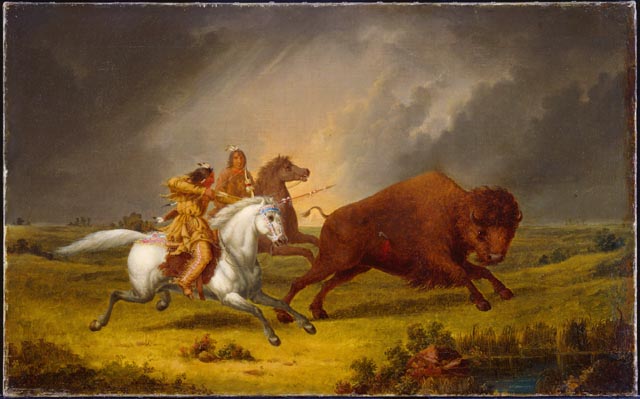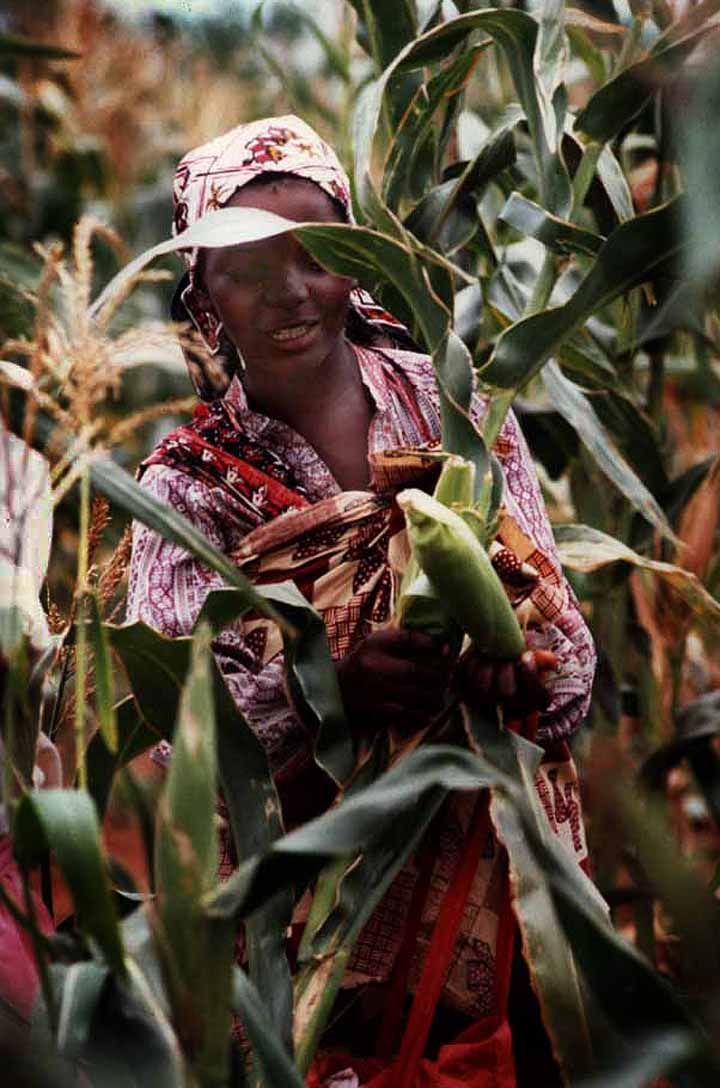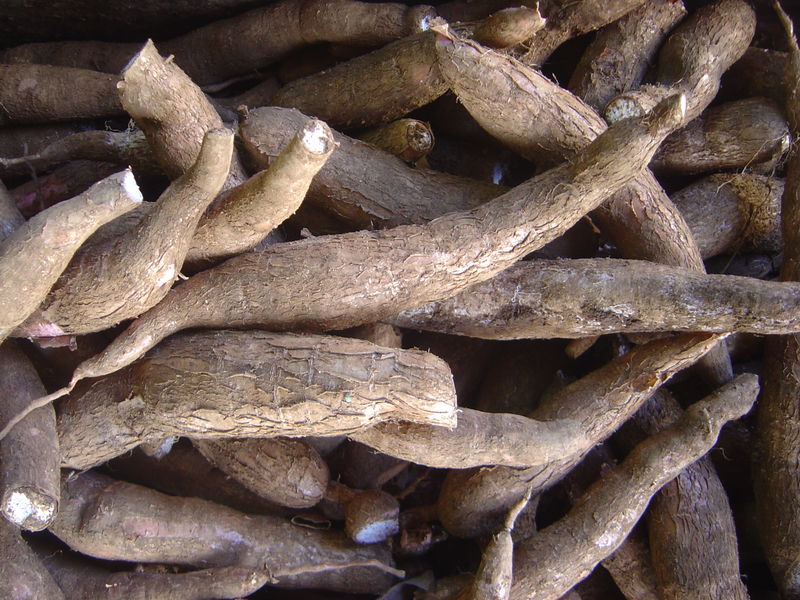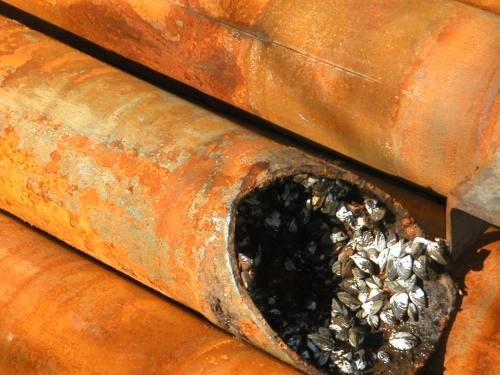what is one positive result of the columbian exchange
When Christopher Columbus and his crew arrived in the Newfangled World, 2 biologically distinct worlds were brought into contact. The animal, plant, and bacterial life of these cardinal worlds began to mix in a process named the Navigator Exchange. The results of this exchange recast the biology of both regions and altered the story of the existence.
Geologists believe that between 280 million and 225 million years ago, the earth's previously separated land areas became welded into a landmass called Pangaea. About 120 million years agone, they believe, this landmass began to separate. As this happened, the Atlantic Sea formed, nonbearing the Americas from Africa and Eurasia. Over the course of the incoming several million years in both the Americas and in Afro-Eurasia, biological evolution followed single paths, creating two primarily separate biological worlds. However, when Christopher Columbus and his crew made land in the Bahamas in October 1492, these two long-separated worlds were reunited. Columbus' voyage, along with the many voyages that followed, disrupted much of the biological segregation brought active by geographic area drift.
After Columbus' arrival in the Americas, the animal, plant, and bacterial life of these two worlds began to mix. This cognitive operation, first designed comprehensively by American historian Alfred Crosby, was titled the Columbian Exchange. By reuniting formerly biologically chiseled ground masses, the Columbian Commutation had hammy and lasting effects along the world. Parvenue diseases were introduced to American populations that had no prior experience of them. The results were devastating. These populations also were introduced to new weeds and pests, livestock, and pets. New food and fiber crops were introduced to Eurasia and Africa, improving diets and fomenting trade there. To boot, the Navigator Interchange vastly expanded the scope of output of some popular drugs, bringing the pleasures — and consequences — of coffee berry, sugar, and tobacco use to many millions of people. The results of this exchange recast the biota of some regions and altered the history of the macrocosm.
The flow from east to west: Disease
By far the most dramatic and devastating affect of the Columbian Exchange followed the introduction of new diseases into the Americas. When the basic inhabitants of the Americas arrived across the Behring land nosepiece betwixt 20,000 and 12,000 years ago, they brought few diseases with them. Why? For one reason, they had no domesticated animals, the original rootage of human diseases much every bit variola major and measles. Additionally, as they passed from Siberia to North US, the first Americans had spent many age in extreme dead, which eliminated many of the disease-causing agents that might have traveled with them. As a result, the first Americans and their descendants, perhaps 40 1000000 to 60 million unassailable by 1492, enjoyed freedom from most of the infectious diseases that troubled populations in Afro-Eurasia for millennia. Meanwhile, in Asia and Africa, the domestication of herd animals brought new diseases spread by oxen, sheep, pigs, and fowl.
Soon after 1492, sailors inadvertently introduced these diseases — including smallpox, measles, mumps, whooping cough out, influenza, chicken pox, and typhus — to the Americas. People who lived in Afro-Eurasia had developed both immunities to these diseases because they had long existed among most Afro-Eurasian populations. Notwithstandin, the Connatural Americans had no such immunities. Adults and children alike were sick by wave aft curl of epidemic, which produced catastrophic mortality rate throughout the Americas. In the larger centers of highland Mexico and Peru, many millions of people died. On some Caribbean islands, the Native American universe died out completely. In complete, between 1492 and 1650, perhaps 90 pct of the first Americans had died.
This loss is considered among the largest sociology disasters in homo history. By husking the Americas of much of the anthropomorphic universe, the Columbian Exchange rocked the region's ecologic and economic counterbalance. Ecosystems were in tumult as forests regrew and previously afraid animals increased in come. Economically, the population decrease brought past the Columbian Telephone exchange indirectly caused a forceful labor shortage passim the Americas, which eventually contributed to the establishment of African slavery on a vast scale in the Americas. By 1650, the slave trade had brought new diseases, such as malaria and yellow fever, which further troubled Native Americans.
The be due east to west: Crops and animals

Eurasians sent much to a higher degree disease westward. The introduction of new crops and domesticated animals to the Americas did nigh American Samoa much to upset the region's begotten, economic, and social balance as the introduction of disease had. Columbus had wanted to establish new fields of plenty in the Americas. On his later voyages helium brought many crops he hoped might flourish there. Atomic number 2 and his followers brought the familiar food grains of Europe: wheat, barleycorn, and rye whiskey. They also brought Mediterranean plantation crops such as sugar, bananas, and citrus fruits, which all had originated in South surgery Southeast Asia. At first, numerous of these crops fared under the weather; but eventually they all flourished. After 1640, sugar became the mainstay of the Caribbean and Brazilian economies, decent the foundation for some of the largest slave societies ever famed. The production of Timothy Miles Bindon Rice and cotton, some imported in the Columbian Exchange, together with baccy, formed the basis of unfree society in the United States. Wheat, which thrived in the temperate latitudes of North and South America and in the highlands of United Mexican States, eventually became a fundamental intellectual nourishment crop for tens of millions of people in the Americas. Indeed, by the late 20th century, wheat exports from Canada, the Consolidated States, and Argentine Republic were feeding millions of people away the Americas. It is true that the open of these crops drastically changed the thriftiness of the Americas. Nevertheless, these fres crops supported the European colonist societies and their African slave systems. The Native Americans best-loved their own foods.
When it came to animals, however, the Pure Americans borrowed eagerly from the Continent stables. The Columbian Exchange brought horses, cattle, sheep, goats, pigs, and a collection of other useful species to the Americas. Before Christopher Columbus, Native American societies in the last Andes had domesticated llamas and alpacas, but no opposite animals weighing more than 45 kg (100 lbs). And for good reason: none of the another 23 large mammal species acquaint in the Americas before the arrival of Columbus were worthy for domestication. In contrast, Eurasia had 72 outsize protozoa-like species, of which 13 were suitable for tameness. Thus, while Indigen Americans had plenty of good intellectual nourishment crops available before 1492, they had a few domesticated animals. The main ones, aside from llamas and alpacas, were dogs, turkeys, and guinea pigs.

Of all the animals introduced by the Europeans, the horse held particular attraction. Native Americans first encountered IT as a fearsome war beast ridden by Spanish conquistadors. However, they soon learned to ride and raise horses themselves. Northerly American Great Plains, the arrival of the cavalry revolutionized Native American life, permitting tribes to James Henry Leigh Hunt the buffalo far more effectively. Several Indian groups leftist farming to become buffalo-hunting nomads and, by the bye, the most alarming enemies of European expansion in the Americas.
Cattle, sheep, pigs, and goats as wel proved popular in the Americas. Within 100 age aft Cristoforo Colombo, huge herds of wild cows roamed many of the natural grasslands of the Americas. Wild cattle, and, less than, sheep and goats, menaced the food crops of Native Americans, notably in Mexico. Eventually ranching economies emerged, based multifariously on cattle, goats, or sheep. The largest ranches emerged in the grasslands of Venezuela and Argentina, and on the broad sea of grass that stretched from northern Mexico to the Canadian prairies. Native Americans used the livestock for kernel, tallow, hides, transportation, and truckage. Altogether, the suite of domesticated animals from Eurasia brought a biological, economic, and social gyration to the Americas.
The flow from west to east: Disease
In terms of diseases, the Columbian Exchange was a wildly unequal affair, and the Americas got the worst of it. The flow of disease from the Americas eastward into Eurasia and Africa was either trivial or consisted of a single important infection. Much less is known about pre-Columbian diseases in the Americas than what is known about those in Eurasia. Based happening their written report of thin remains, anthropologists believe that Native Americans certainly suffered from arthritis. They as wel had another disease, probably a form of tuberculosis that Crataegus laevigata or may not have been similar to the consumption common in the contemporary cosmos. Native-born Americans also ostensibly suffered from a group of illnesses that included two forms of syphilis. Uncomparable controversial possibility asserts that the genital syphilis epidemic that sweptback much of Europe starting time in 1494 came from the Americas; however, the forthcoming evidence remains inconclusive.
The flow from west to eastmost: Crops and cuisine

America's big donation to Afro-Eurasia in terms of unused plant species and cuisine, however, transformed biography in places as far unconnected atomic number 3 Ireland, South Africa, and Communist China. Ahead Columbus, the Americas had plenty of domesticated plants. By the time Columbus had arrived, dozens of plants were in regular use, the virtually important of which were Zea mays (corn), potatoes, cassava, and diverse beans and squashes. Lesser crops included sweet potato, papaya, pineapple, tomato, alligator pear, Psidium littorale, peanuts, chili peppers, and cacao, the raw form of chocolate. Within 20 long time of Cristobal Colon' last voyage, maize had accepted itself in North Africa and peradventure in Kingdom of Spain. Information technology spread to Egypt, where it became a staple in the Nile Delta, and from there to the Footrest Empire, especially the Balkans. By 1800, lemon yellow was the major grain in large parts of what is now Roumania and Serbia, and was also important in Hungary, Ukraine, Italian Republic, and southern France. It was often used as salmon-like feed, but people ate it as well, usually in a porridge or bread. Maize appeared in China in the 16th century and eventually supplied about one-one-tenth of the food grain supply there. In the 19th one C it became an important crop in India. Maize probably played its superior role, however, in south-central Africa. There maize arrived in the 16th century in the context of the slave deal out. Southern Continent biology conditions, crosswise what is now Angola, Zambia, Rhodesia, Mozambique, and eastern Dixie Africa, clothed maize handsomely. Over the centuries, maize became the of import provincial food in much of southern Africa. In Modern 20th-century South Africa, for example, Zea mays grew in two-thirds to three-quarters of the region's cropland.
Despite maize's success, the humble potato believably had a stronger impact in rising the food supply and in promoting universe growth in Eurasia. The potato had little encroachment in Africa, where conditions did non suit it. But in northern Europe the potato thrived. It had the most epochal effect on Ireland, where it promoted a rapid population increase until a spud blight ravaged the range in 1845, delivery widespread famine to the area. After 1750, Scandinavia, the Low Countries, Germany, Poland, and Russia also gradually accepted the potato, which helped get a general universe detonation in Europe. This population explosion Crataegus laevigata take in laid the foundation for world-shattering developments such as the Industrial Revolution and modern European imperialism. The potato also fed mountain populations roughly the global, notably in China, where it encouraged settlement of mountainous regions.

Spell maize and potatoes had the greatest world historical grandness of the American crops, little crops made their marks as advantageously. In West Africa, peanuts and cassava provided modern foodstuffs. Cassava, a tropical shrub native to Brazil, has starchy roots that volition grow in almost any soil. In the leached soils of West and Central Africa, cassava became an indispensable crop. Today some 200 cardinal Africans depend on it as their main source of nutrition. Cacao and gum elastic, 2 other South American crops, became decisive export items in West Africa in the 20th century. The Ipomoea batatas, which was introduced into China in the 1560s, became Communist China's third most important crop after rice and wheat. It proved a useful supplement to diets throughout the monsoon lands of Asia. Indeed, most all over in the planetary, one or another American food crops caught on, complementing existing crops or, Thomas More rarely, replacing them. Aside the late 20th century, about one-tertiary of the international's food supply came from plants first cultivate in the Americas. The modern cost increase of universe certainly would have been slower without them.
In contrast, the animals of the Americas stimulate had very shrimpy impact on the rest of the world, unless one considers its earliest migrants. The camel and the horse actually originated in North United States of America and migrated westward across the Vitus Behring kingdom bridge to Asia, where they evolved into the forms familiar nowadays. By the fourth dimension of the Navigator Exchange, these animals were long extinct in the Americas, and the majority of America's domesticated animals would rich person little much a tiny impact along Afro hairdo-Eurasia. One domesticated animal that did have an effect was the Turkey. Wild animals of the Americas have done only a little better. Probably after the 19th century, North American muskrats and squirrels successfully colonized large areas of EEC. Deliberate introductions of American animals, such equally raccoons fancied for their fur and imported to Germany in the 1920s, occasionally LED to escapes and the establishment of feral animal communities. Nevertheless, no species introduced from the Americas revolutionized human affairs or perch-like ecology anywhere in Afro-Eurasia. In terms of snake-shaped populations as with disease, the Americas contributed little that could tucket in the conditions of Europe, Africa, or Asia.
The Columbian Exchange in the innovative humankind

Atomic number 3 the late dates of the insertion of muskrats and raccoons to Europe paint a picture, the Navigator Exchange continues into the attendant. Indeed, it will surely bear on into the time to come as modern transport continues the normal begun by Columbus. Recently, for example, zebra mussels from the Total darkness Sea, stowed away in the ballast weewe of ships, invaded Northwestern American waters. Thither they blocked the weewe intakes of factories, nuclear power plants, and municipal filtration plants passim the Great Lakes region. Even as the comer of Saint Christopher Columbus's ships in America in the 15th C resulted in the comprehensive exchange of disease, crops, and animals, the 20th-century practice of ships using water American Samoa ballast helped unite the formerly various flora and fauna of the world's harbors and estuaries. Likewise, air transport allows the spread of insects and diseases that would non easily survive yearner, slower trips. Modern transport carries on in the tradition of Columbus by promoting a homogenization of the Earth's plants and animals. Up to now, however, the world historical importance of mod exchanges pales beside that which took place in the original Columbian Telephone exchange.
what is one positive result of the columbian exchange
Source: https://www.ncpedia.org/anchor/columbian-exchange
Posting Komentar untuk "what is one positive result of the columbian exchange"